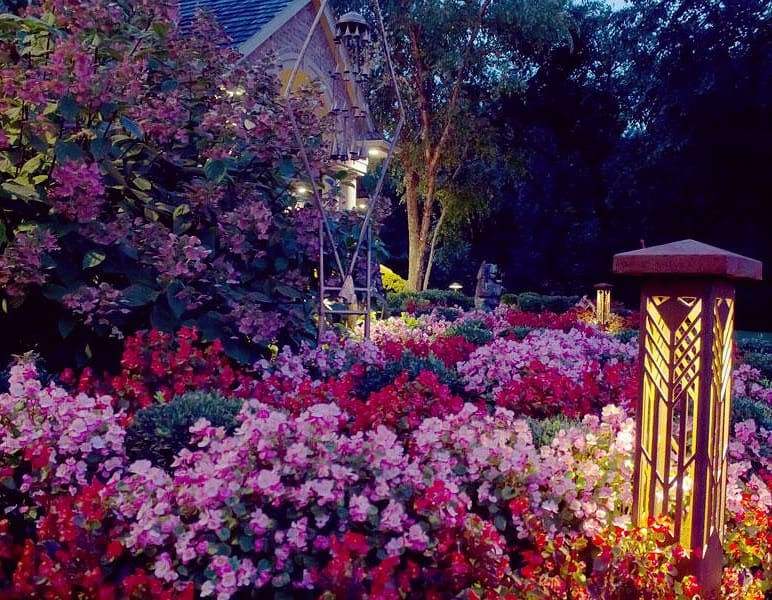We all have ways of looking at the world. Depending on our personal style, the way we interact with our natural surroundings varies from person to person. And though we all have a wide range of interaction, we still find commonalities. There are ways of looking at the world that transcend personal style, and inform our experience not only with design, but of living.
These are the four design elements:
· Form
· Line
· Texture
· Color
Forms are associated with three-dimensional objects. Plants, for instance, come in many different forms and styles. Different types of plants can influence and change the feel of scenery or natural décor. Taller plants can feel fuller, or more imposing; shorter plants can seem friendlier, welcoming, possibly even simpler. Columnar plants can feel rigid or formal, especially if placed near paths or walkways.

When we think of form, we think of the ways the shape influences us and our perception. We design with form in mind to set a particular mood or feel, especially in hardscaping or outdoor design scenarios. We use form for contextual setting and for putting shapes to our inner feelings and moods. Form can influence our preference for light fixtures, and our desired shape for our outlook for them.
Line is the next design element. Lines can be:
· Horizonal
· Vertical
· Straight
· Diagonal
· Curved
We use lines in landscape designs to accentuate objects, control movement, or draw attention to a focal point. Such focal points can be water features, firepits, or hardscape pathways and patios. Paths or walkways going directly to a focal point draw a visitor to that area. Walkways that are less structured or meander, for instance, can give a feeling of wandering or even adventure and exploration.
Lines are real (actual) or perceived (implied). Real lines are direct and tangible. We see those frequently in the world. But when a series of objects are put together to form a line, this is called a perceived line. For instance, when we line up outdoor plants in a row next to a walk or pathway, this can form a perceived line to our eye.

Texture comes in many different forms and varies in definition from medium to medium. Coarse, fine, medium, tactile, visual, audible, smooth, fuzzy, shiny, etc. There are many different ways to describe what we feel in a tactile sense. We all have no shortage of adjectives to describe the things we like to interact with.
For landscaping purposes, we often group textures as:
· Coarse
· Fine
· Medium
These three textures adequately describe types of stone or plants, bricks, columns, light fixtures, and so on.
It’s a good design tactic to vary the level and types of textures for contrast and visual sensation in landscapes. Design composition is greatly enhanced by a knowledge of contrasting textures. Contrast adds interest to a design scheme. There are also many different textural attributes for plants that add value to their contextual placement. For instance, leaves, barks, flower shapes, and stems all play a part in a textual composition. Placement of lights and fixtures within them can adjust overall texture.

The final design element is color. Color is possibly the most important, but also one of the most abused and overused. It is directly influenced by the level and type of light. We see color all around us; it’s in trees, it’s in nature abundantly, and it exists in multitude in cities and homes. We vary the colors of our clothes, the colors of our cars, and the colors of our buildings, home décor, wall paint, and every other element in our modern lives. As humans, we’re naturally attracted to and love enhancing or changing around colors and their schemes. We also love the look of different lights intermingled with natural landscaped elements.
Warm color schemes include reds, oranges, and yellows. Cold color schemes naturally involve blues, purples, and greens. Warm and cool compositions can have different moods and effects on a landscaping design. Red, for instance, can be passionate or aggressive; blue can be inviting, serene. Contrasting warm and cool is a delicate art and a matter of finesse for setting the right tone. Different types of foliage and plants, with different colors, can add and enhance a setting greatly. Seasonal colors can change our mood and help us set the style and tone for festivities.

When used in combination, the four design elements can set the tone for our world. They can enhance our mood, set a context for our social interactions, and brighten the spirit of any existing location. When used correctly and in the proper contrast, design elements change the natural world in a sustainable, responsible way into a paradigm that can actually brighten our living arrangements. Understanding the play between form, color, line, and texture is the discipline that turns landscaping into an art.
Sam Sullivan

Comments